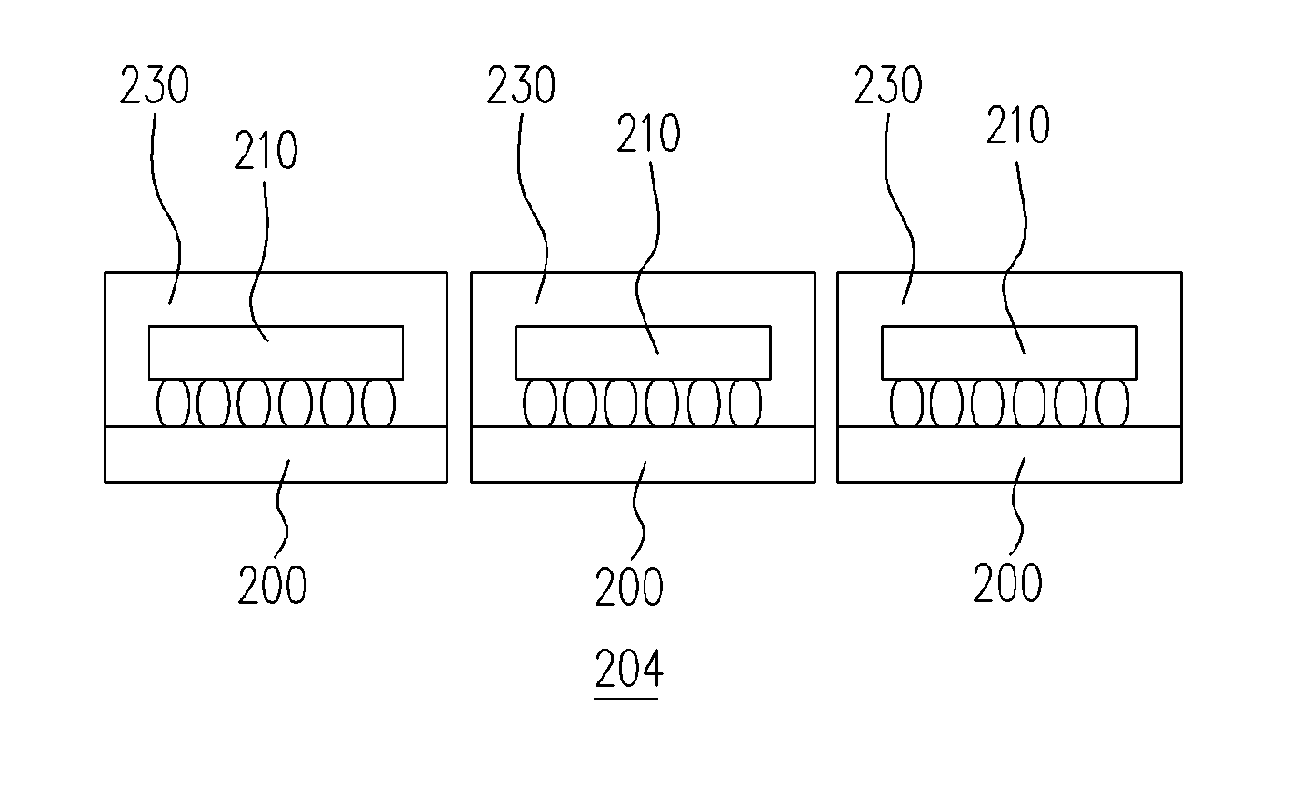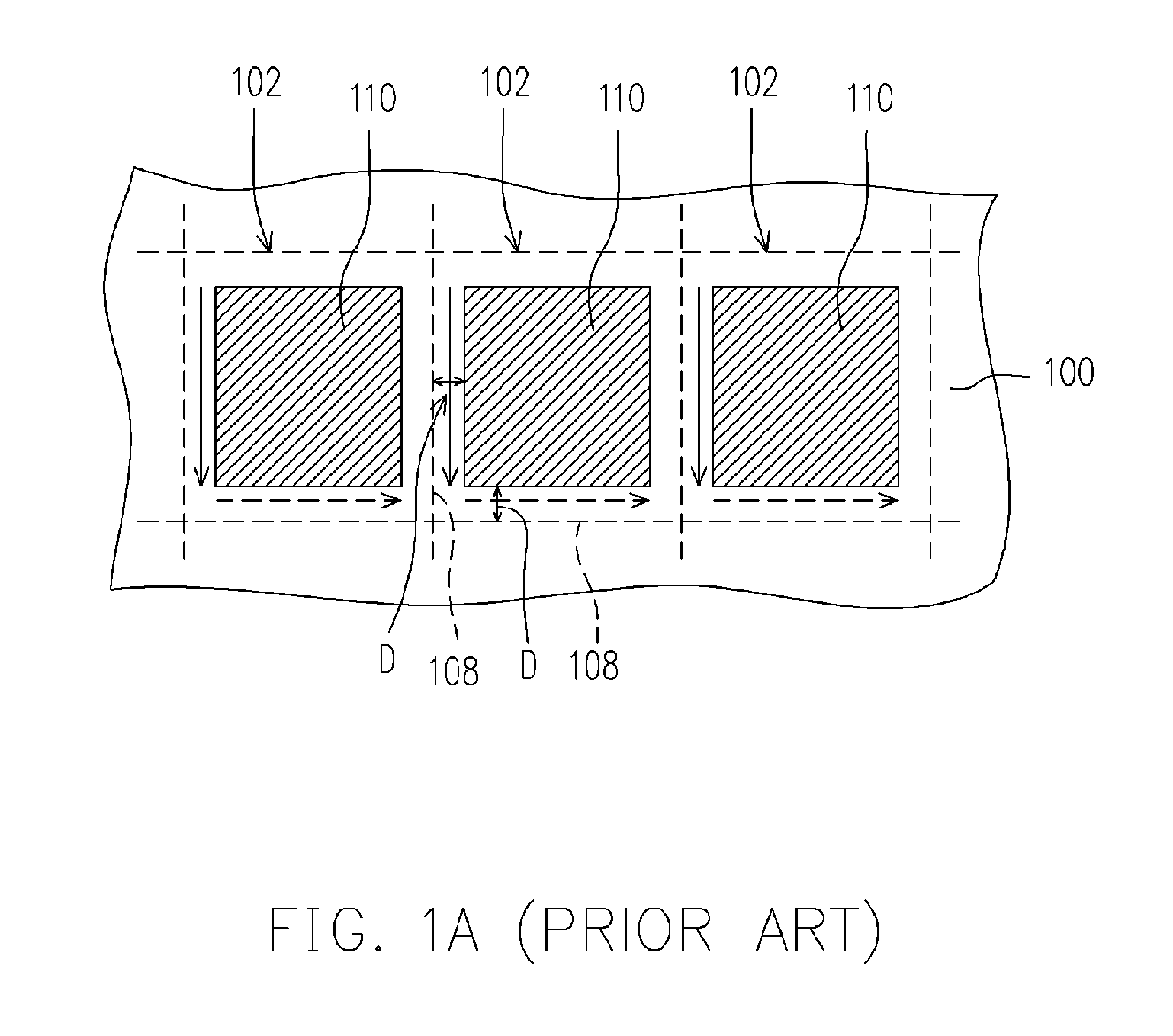Flip chip packaging process
a packaging process and flip chip technology, applied in the direction of electrical equipment, semiconductor devices, semiconductor/solid-state device details, etc., can solve the problems of significant difference between the inherent properties of these two materials, become vulnerable to damage, and get deteriorated, so as to increase the available surface area on the substrate and increase the reliability of the flip chip package structure
- Summary
- Abstract
- Description
- Claims
- Application Information
AI Technical Summary
Benefits of technology
Problems solved by technology
Method used
Image
Examples
Embodiment Construction
[0020]FIG. 2A-2E are schematic views of a flip chip packaging process according to one embodiment of the invention. Referring to FIG. 2A, a substrate 200 is provided. The substrate 200 has a plurality of substrate units 202 on which a plurality of chips are mounted using a flip chip interconnection technology to form a plurality of chip scale package (CSP) units. The substrate 200 can be, for example, a multiple-layer circuit substrate of which the outermost layer has a plurality of contacts (not shown). Those contacts can be arranged on chip bonding areas (indicated by a slanted area) of the substrate 200 in various manners as intermediates of electrical connection of the substrate 200 to the chips 210.
[0021]It is noted that there is a predetermined space between the chips 210 for cutting the substrate 200. The distance D1 between edges of the chips 210 and cutting line 208 is as small as possible, and the whole width of a cutting tool can be accommodated into the distance D1. The ...
PUM
 Login to View More
Login to View More Abstract
Description
Claims
Application Information
 Login to View More
Login to View More - R&D
- Intellectual Property
- Life Sciences
- Materials
- Tech Scout
- Unparalleled Data Quality
- Higher Quality Content
- 60% Fewer Hallucinations
Browse by: Latest US Patents, China's latest patents, Technical Efficacy Thesaurus, Application Domain, Technology Topic, Popular Technical Reports.
© 2025 PatSnap. All rights reserved.Legal|Privacy policy|Modern Slavery Act Transparency Statement|Sitemap|About US| Contact US: help@patsnap.com



